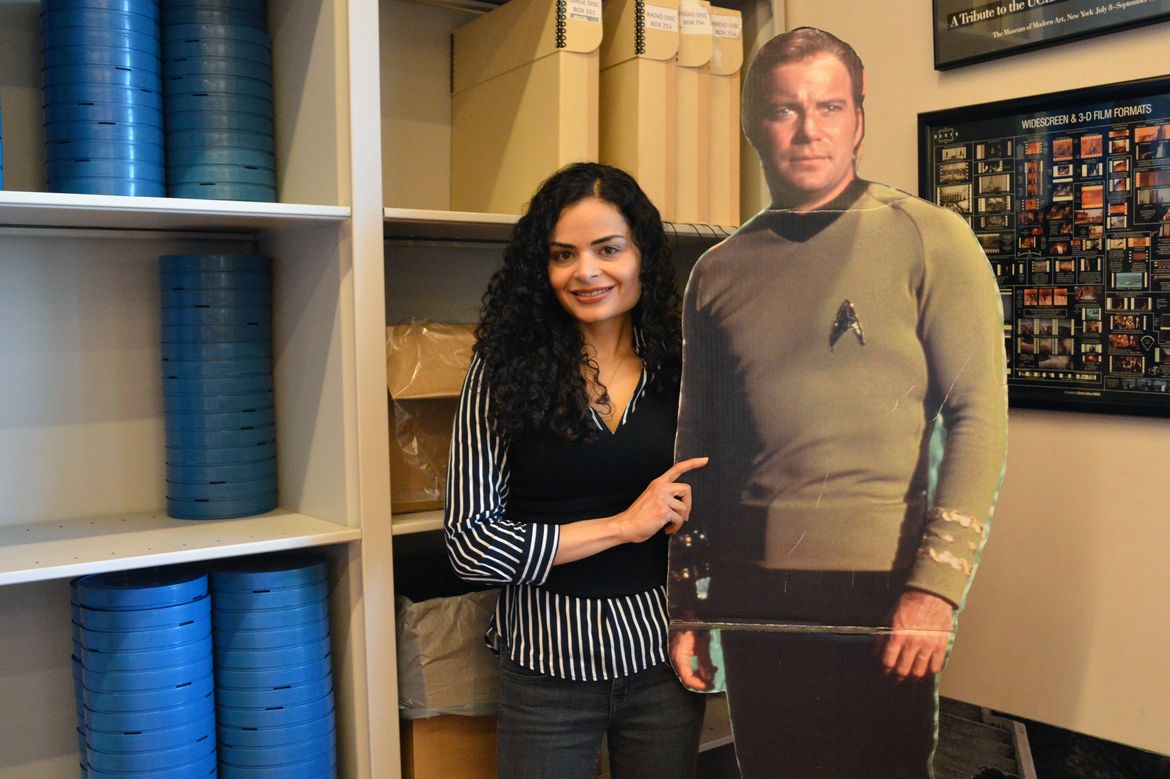Keeping catalog records of more than 500,000 holdings, which include virtually every kind of moving image format, is no easy feat. Each item is unique as a physical object and comes with its own production history. The archive depends on this information to make daily decisions about collections management, preservation, loans, research access and more. In this interview, cataloging supervisor Annette Doss talks about her work.
What is your role as a moving image cataloger?
I lead the cataloging department’s efforts to catalog moving image materials so that they are accessible to researchers, students and the general public. Our work is very much behind-the-scenes, but it’s the first step in providing access to our collections.
What are some of the challenges of cataloging such a vast collection?
There are many unique challenges when cataloging moving image materials. Film and television acquisitions come in faster than we can catalog them. Addressing the backlog of materials is a top priority, but when other projects or grant deadlines come up, our priorities shift to accomplish the project’s deliverables. It’s about knowing how to make reasonable cataloging decisions when there is a massive influx of materials that require attention.
Another challenge is staying on top of current standards and best practices in the cataloging community. Since I joined the archive in 2014, I have been implementing the new cataloging standard, resource description and access (RDA). As challenging as it is to adopt and create new procedures, I think it’s important to be malleable when considering how our resources will be accessed in the future. Remaining on the cutting edge of national standards is a good way to ensure that users will always be able to access our data. I like using RDA because it’s a flexible and extensible content standard. I am always learning something new, especially as we begin to catalog digital content. I see great potential to be innovative and forward-thinking in these areas.
In 1989, the Archive became one of the first major moving image archives to make its catalog records public and searchable online. Why is public access important?
As a cataloger, my work is driven by access. Access for research and access for preservation. We catalog films, but we also document the preservation process of the particular print in the bibliographic record. For example, if you were searching for “The Long Voyage Home” in our public access catalog, which screened in the 2015 UCLA Festival of Preservation, you will find that the records include the preservation and/or reproduction details. This information is valuable for film scholars as well as film conservators.
Are there any cataloging projects you’re particularly proud of?
I’m very proud of the first cataloging project I worked on at the archive, the “In the Life” collection. “In the Life” was the first and only LGBTQ newsmagazine series on national television, and it tackled issues and events underrepresented by mainstream news outlets. The program ran from 1992 to 2012 and covered significant topics including HIV criminalization, the “don’t ask, don’t tell” military policy, and Defense of Marriage Act. Over 9,000 items comprise the collection, including the 200-plus episodes that were digitized and made accessible online. It takes a village to complete a project of this magnitude, and we received generous grant funding to process, catalog and digitize the collection. It was a collaborative effort among the archivists, curators, digital lab, web development team, and our project cataloger, Jon Marquis, who watched every episode in order to catalog the series. One aspect of the project that required our attention was the use of subject headings relevant to LGBTQ history. We had to consider how LGBTQ studies have developed since the program’s inception and what topics researchers would find valuable given current trends and social climates, while also accurately reflecting the historical context of the issues and events that were covered in the program. We have to do our due diligence when creating metadata for a such a groundbreaking achievement as “In the Life.” I’m grateful to have had the opportunity to work on this project.
Do you have a favorite film or TV show?
It’s a tie between “Wings of Desire” (1987) and “Nine to Five” (1980) — timeless and timely.




